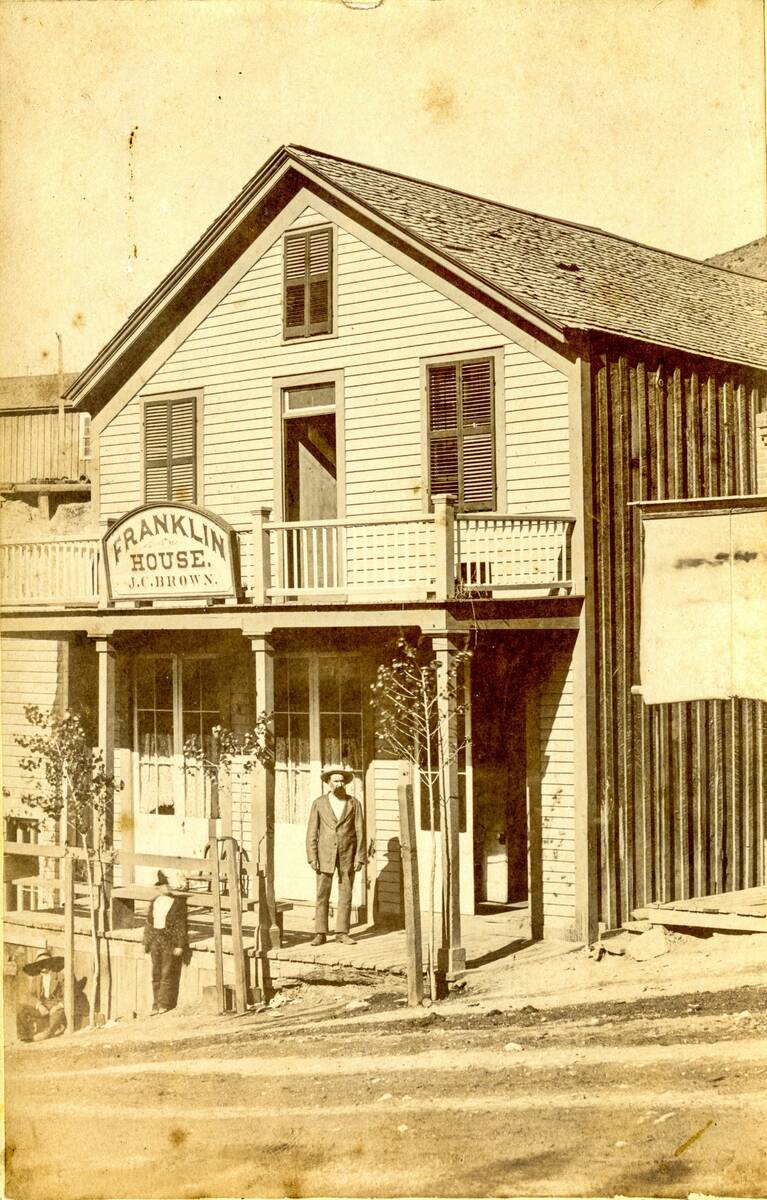This Nevada mining town sheds light on Black history in the Old West
In a Northern Nevada boomtown, under several layers of parking lot pavement and earth, archaeologists found bits and pieces of what was once a popular saloon — a place known to Mark Twain, who worked in the same city as a reporter.
Fine crystal stemware suggested the Boston Saloon was upscale. Tobacco pipes, fancy buttons and dress beads, and even a Tabasco sauce bottle gave insight to who the patrons were and what they enjoyed.
The Boston Saloon dig conducted nearly 25 years ago gave historians insight into the lives of Black residents in Virginia City in the late nineteenth century. It filled in gaps in the Black history of the mining town, an integral setting in the Silver State’s founding.
Joe Curtis, a Virginia City-based historian, said Black residents began arriving in the Comstock area — which encompasses Virginia City and the nearby communities of Gold Hill, Silver City and Dayton – beginning in the 1850s.
“As you look at it, you’ll find a kind of quiet migration moving in this direction,” Curtis said. “They’re working as cowboys, as ranch hands, all sorts of things. Some of them probably came over here in the later 1850s looking for their fortune as a gold miner just like anybody else.”
Virginia City was notable for its role in Nevada’s beginnings. The Comstock Lode, a silver deposit discovered in 1859 at Mount Davidson, made the region one of the most important industrial cities in the West. Its riches helped pave the way to the creation of the Nevada Territory and eventually, statehood in 1864.
The mining boom drew people from all over, Curtis said. Virginia City is particularly notable because it was integrated. Black residents – numbering 44 in 1860 before Nevada became a state and about 100 in 1870, according to census records – lived in homes scattered throughout the city and not in a segregated neighborhood. (There was, however, a Chinatown, where as many as 2,000 Chinese immigrants once lived.)
Black residents often performed physical labor or worked in service jobs, records show. A small number held positions of authority — as managers of boardinghouses and lodging houses, and as saloon owners. There was one Black physician, W.H.C. Stephenson. Two women were hatmakers and one woman was a dressmaker.
“They were embedded within the community,” Curtis said. “There were people in this community in the 1870s from every corner of the world you can think of in that period of time.”
William Brown, the proprietor of the Boston Saloon, was an example of economic success. Born in Massachusetts as a free man, his business was open at the same location for at least nine years — a notable amount of time in an era when boomtown business owners were known to move around every few months, according to a scholarly article on the archaeological dig.
Even so, the territory-turned-state enacted racist laws, including being denied the right to vote, hold office or serve in a militia on on juries or testify against white men in legal cases. All of Nevada’s racist laws were repealed by 1882 except for the criminalization of interracial marriage, which stayed on the books for another 77 years, ending in 1959.
Many in the region organized against the racist laws. In mid-1865, the Black residents of the Comstock area met several times at the First Baptist Church in the community. They formed the Nevada Executive Committee, a group that petitioned the Legislature for suffrage and legal equality. Stephenson, the state’s first Black doctor, was appointed chairman of that group, according to historian Elmer Rusco’s book, “Good Time Coming?”
By the 1880s, the Comstock region’s population declined as the Comstock lode became less profitable. People left for other mining towns, or lose their businesses and homes in the Great Fire of 1875.
Historians see the Black community in that region as one that had greater opportunities than other places — all while experiencing familiar segregation and racism.
“On the one hand, they appeared to have more freedom and opportunity there than in many other parts of the country in terms of economic successes and an overall tone of integrated living,” according to archaeologist Kelly Dixon, who worked on the Boston Saloon dig. “On the other hand, they consistently experienced racist undertones and overtly restrictive attitudes and laws.”
Contact McKenna Ross at mross@reviewjournal.com. Follow @mckenna_ross_ on X.
In more recent months, Virginia City has been in the news for an alleged incident of racism that occurred during a public event. In August 2024, three people were arrested for allegedly using a racial slur and assaulting Ricky Johnson, a Black man who was collecting signatures in town. Johnson recorded part of the encounter and shared the video on TikTok, where it went viral. Town leaders and politicians around the state quickly denounced the incident, distancing themselves from the family of three seen in the video.
Gary, Janis, and Tiffany Miller's next court appearances are in late spring, Reno-area outlets reported.




















